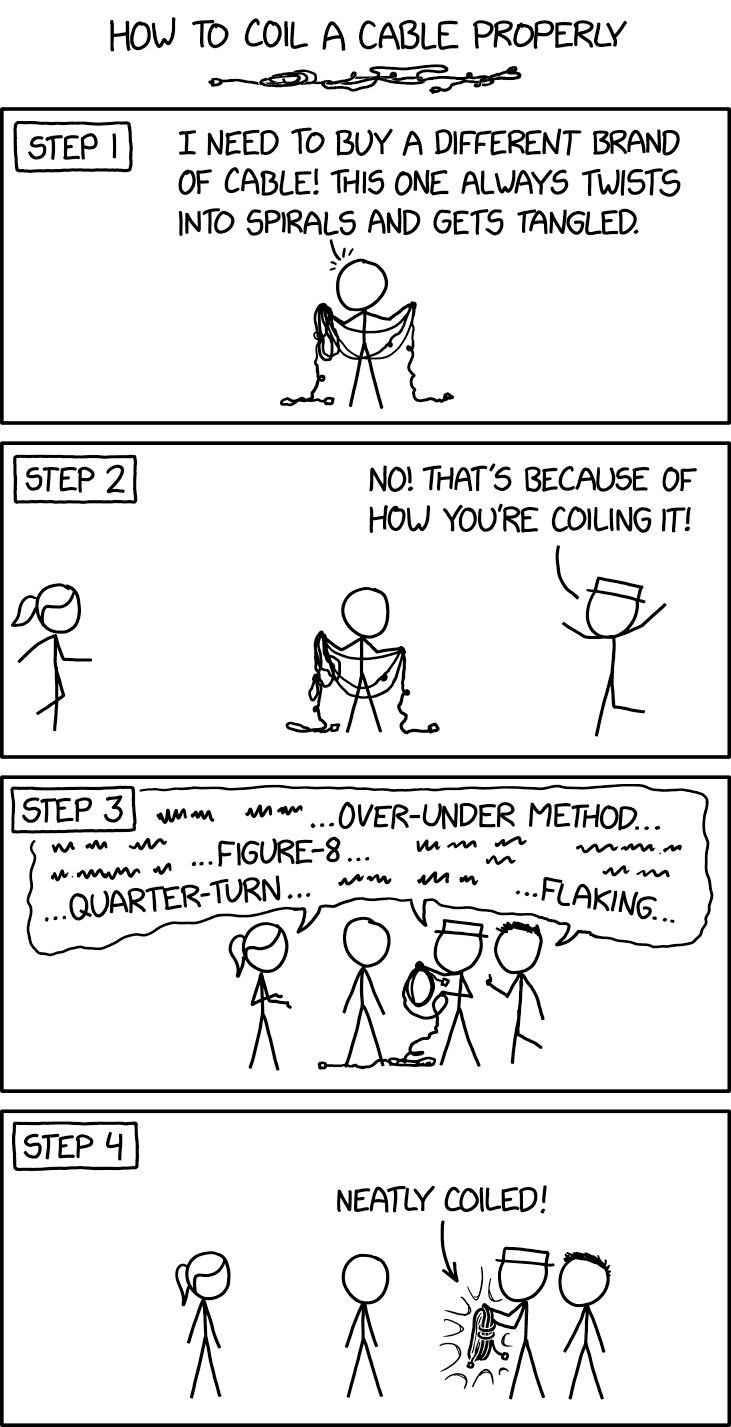Much like the old internet adage: if you want to know the answer to something, confidently state the wrong answer, and inevitably someone who knows the correct answer will chime in to correct you.
Yep, that’s called the Batman smells effect.
I appreciate you!
You used to be able to get people to quickly give you an exact no bullshit straight to the point answer in Linux support forums by making a post along the lines of “Linux sucks because x never works. Windows is obviously superior because it’s possible to make x work”. Someone would then refute all your points and post how to fix your problem.
Exactly.
Betteridge’s law
Over-under ftw!
You heathen! Quarter turn with each loop!
Hey, this is way better than Emacs vs vim.
Of course it is. Why would anyone want to use emacs? Also why would anyone use spaces instead of tabs?
I’m not a topologist, but I’m a rock climber, a sailor and a network technician.
So what I’m saying is I coil cables for $50/h.Forgot to mention ham radio guys and firefighters.
I never try to help others coil their cords/rope/hose. Everyone has their own way to do it, and you can never convince them otherwise.
I did this to a cord at work once. They were not amused. https://www.artofmanliness.com/skills/manly-know-how/no-more-tangled-extension-cords-how-to-wrap-up-your-extension-cord-like-a-contractor/
I would really add some parachutist to competently derail the discussion.
A cable coil will lay flat and neat, and stay orderly indefinitely if two conditions are met:
-
The coil radius is sufficiently large such that there is little to no tendency to unwind.
-
There is no twist running the length of the cable.
The solution to 1 is simple: just create loops large enough that no energy is stored in the “big spring”.
The solution to 2 is any wrap method which avoids a systematic twist along the cable. If you were an ant walking along the cable, you should find that if you start on the outside surface of the coil, you remain on the outside as you walk the loops.
One method for coiling cables that achieves both goals:
Hold one end of the cable fixed in your off-hand. Let the length of the cable loosely hang such that it may freely rotate. With your dominant hand, slide it down the cable measuring a length which will create a loop large enough that the bend radius doesn’t want to spring back open. Here comes the big trick. As you bring your main hand around to create the loop, use your fingertips and thumb to roll the cable in the direction which eases the twist along the cable. Finish the loop, and repeat until done. The coil should lay flat on a table without wanting to unspool wider, or spring up and launch loops into the air (problem and solution 1 and 2 respectively.)
Practice the finger tip movement. It’s like tying shoes or whistling. Once you get it, you get it.
Saved for next time I have to wrap a cable or hose or something.
This guy coils.
-
Draw the rest of the fucking owl
Next, do a garden hose. That beast is impossible to tame!
Lies. Reverse coil or figure 8 (which is just a sort of spread out reverse coil). Wraps easily, unwrap easily.
I feel personally attacked
I’m just a little sad that they make it sound confusing and difficult, when it’s not. sigh.
Mobile version:
https://m.xkcd.com/2810/If your alternating positive and negative coils then don’t even talk to me!
posting link instead of img is lame on mobile
Sync handles xkcd links by displaying them as images, with a button for the hover text.
God I missed this app
We like Randall give him clicks.














